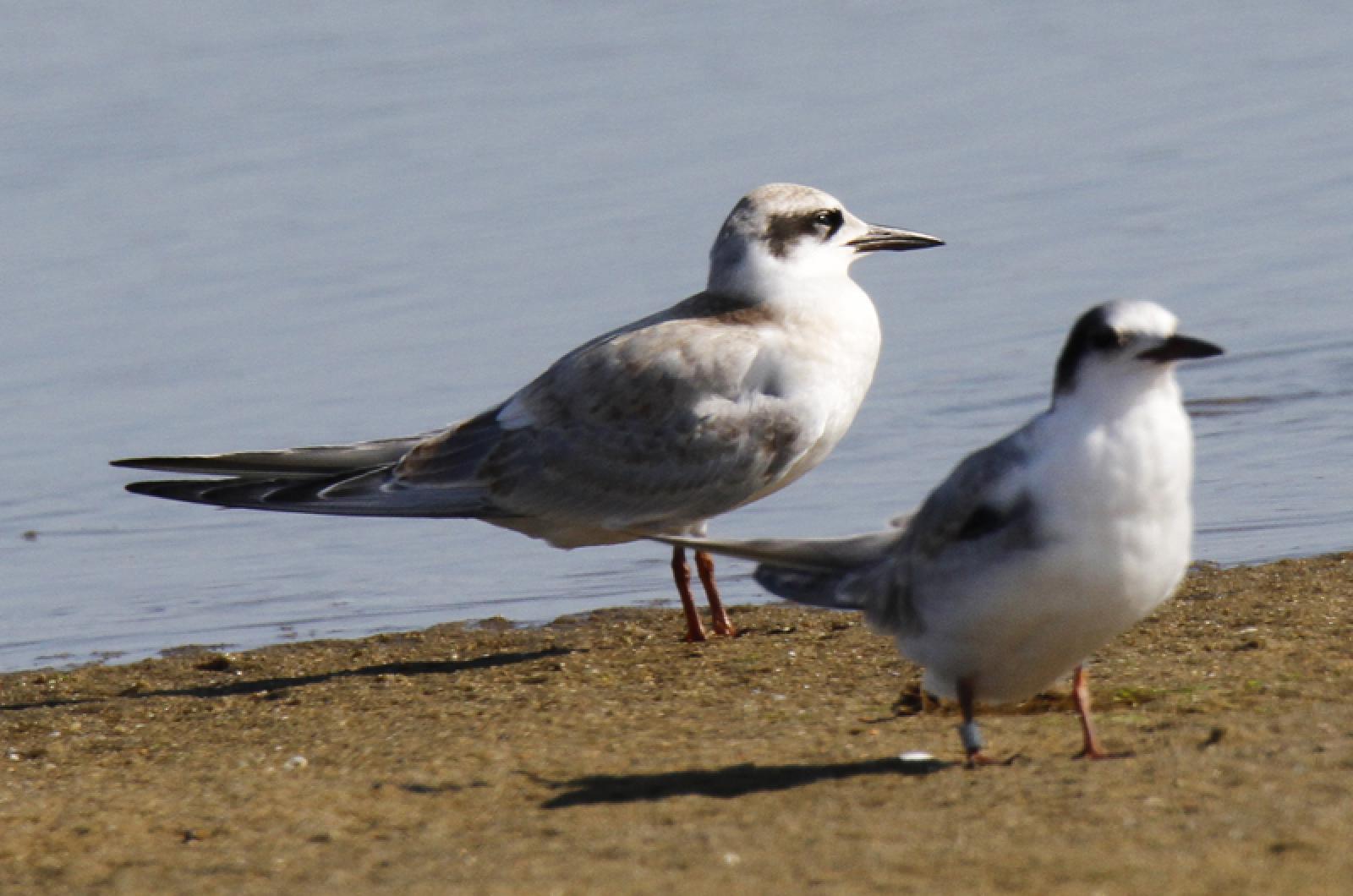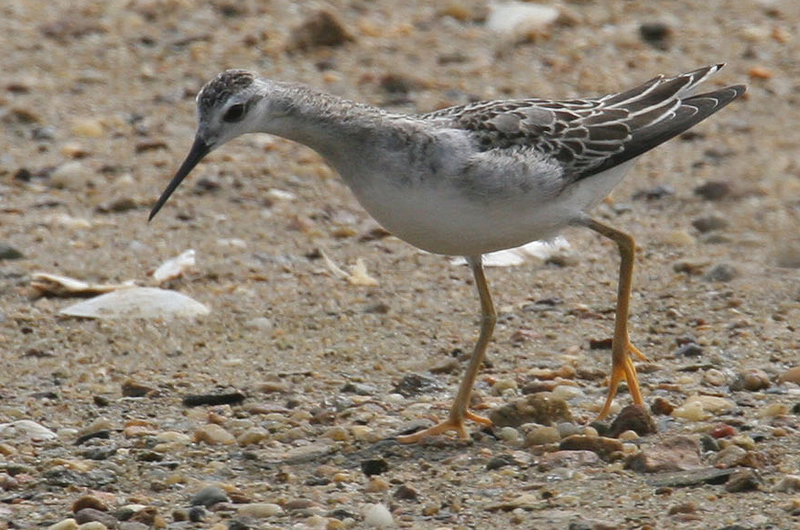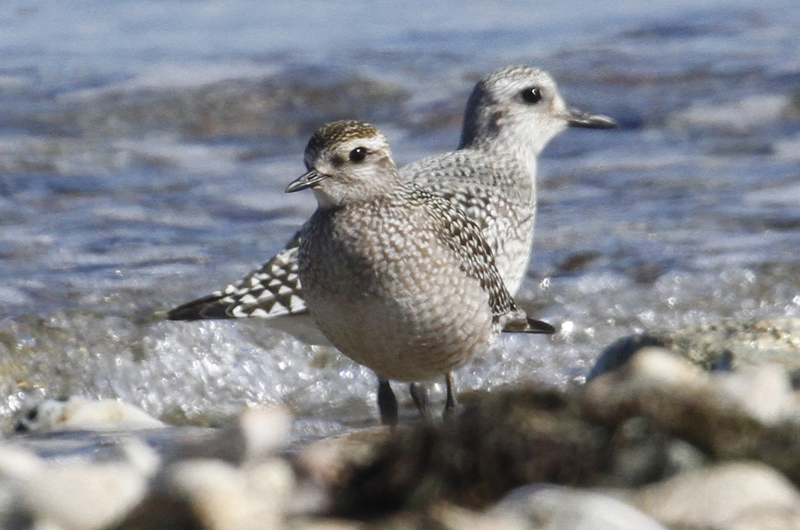We are experiencing a partial solar eclipse as I am writing this. As I look through safety glasses, I can tell that something has taken a bite out off the bottom of the sun! The Island is a little bit darker with a fresh breeze, and probably five degrees cooler because the sun is not at full strength. There is no increased bird activity; probably it is not dark enough for evening activities. And there is no increase in singing near my house, but few birds are still vocalizing in August anyway. But the moon and the sun can not eclipse the interesting birding this week.
The most unusual species is a mostly winter plumage Wilson’s phalarope, found by Warren Woessner on August 16, at the western end of Norton Point Beach. The bird was mostly gray and white, with a long needle-like bill. He observed its characteristic feeding by swimming in tight circles, creating a little whirlpool that sucks its prey to the surface. They are mostly a western species that occasionally ranges east to the Vineyard; they are not pelagic like the other two species of phalaropes.
Several other species have also been added to the year list this week. Unlike the phalarope, each of these species are found every fall, but they are never common and so we are excited when we find them.
Luanne Johnson spotted a stilt sandpiper in the salt marsh at Pecoy Point Preserve on August 20. She got to study it and watch it for about an hour as it foraged both in the salt marsh and by wading in the water. We find this delicate sandpiper every year, and it always seems to appear unexpectedly.
On August 19 I found two golden plovers in the horse pasture at Herring Creek Farm. There were also about 60 of their close cousins, the black-bellied plovers as well as 30 semipalmated plovers, three killdeer, one least sandpiper, an eastern kingbird, 50 tree swallows and 10 barn swallows. The profile of a golden plover is slightly different from that of a black-bellied, but to convincingly identify them I had to see them in flight, where their dark tail and lack of black wing pits distinguish them in all plumages. Warren Woessner went out a few hours later but found only two black-bellieds. The other plovers must have vacated the pastures for the tidal flats on the beaches.
Persistence pays off, however. Mr. Woessner visits Norton Point almost daily, and on the morning of the eclipse he found three golden plovers in a flock of black-bellied plovers. He also found a Forster’s tern in the flock of common and roseate terns. Jane Katch found a covey of quail along Tea Lane in Chilmark on August 20. Lanny McDowell found a great shearwater in the ocean fairly close to Norton Point Beach on August 18. It would fly only a short distance out to sea before settling down and swimming. He notes that most sightings of this species on the Vineyard are of dead birds. This pelagic species lives off-shore, and they are now migrating southward back to their Southern Hemisphere breeding grounds.
On August 17, Thomas Kenefick found about 10 black terns near the Cape Poge Gut. They were part of a larger flock of mostly common terns. And that same day, Jeff Bernier found a juvenile cliff swallow perched on the fencing of the Farm Institute. There were also lots of tree swallows.
Mary-Ruth Long Flores found a female American redstart perched under a window of her house on August 16.
Numerous birders have commented on the abundance of American goldfinches recently. They can be seen, and heard, throughout the Vineyard at this time of the year.
Finally, we are likely to find large flocks of starlings and brown-headed cowbirds when we visit just about any farm or other area of large grassland. The diversity of plumages at this time of the year is remarkable for both species. Juveniles look nothing like the adults, but just to add to the confusion, some of the juveniles are starting to molt into their adult plumages and so they appear to be a variegated black and tan. And do not forget that the adult starlings are starting to molt into their spotted non-breeding plumage. These many different plumages make their identification more interesting.
This is the season for southbound migrants. Please keep us up-to-date by reporting your sightings to birds@mvgazette.com.
Robert Culbert leads Saturday morning Guided Birding Tours and is an ecological consultant living in Vineyard Haven.










Comments
Comment policy »